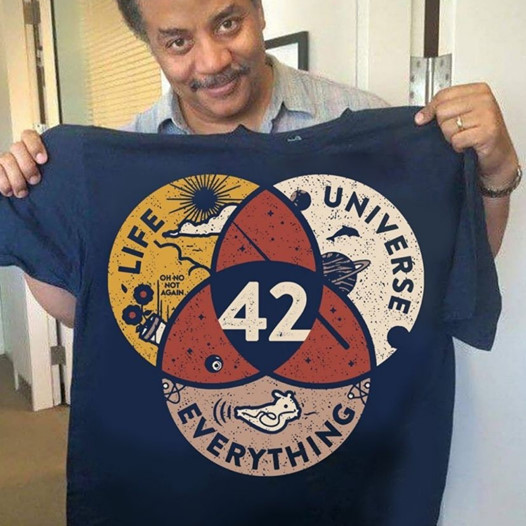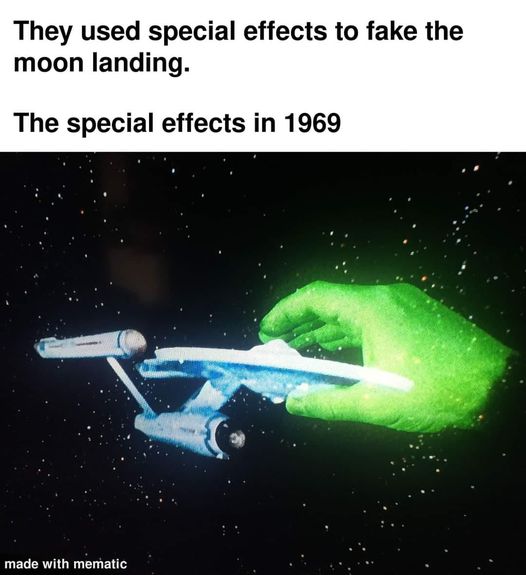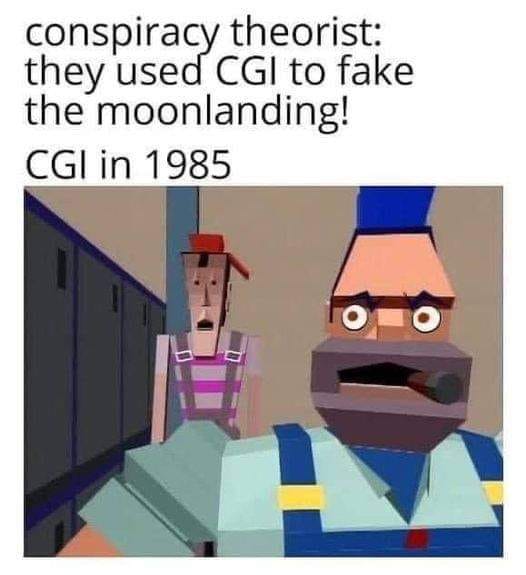Just like the title says, here is the place to discuss science.
SCIENCE!
Home » Forums » The Loveland Arms – pub chat » SCIENCE!
- This topic has 111 replies, 24 voices, and was last updated 11 months, 3 weeks ago by
 JRCarter.
JRCarter.
-
Anonymous
InactiveOctober 6, 2019 at 5:20 pm #979The idea of faster than light travel generates some interesting ideas. One would be that we would be literally flying blind as the positions of distant bodies as they appear from takeoff would be very different than their positions when we finally reach our destination and that would actually depend on how much faster than light we were traveling at each point in the journey. A slight change in velocity or acceleration of a few seconds along the way could mean arriving many lightyears off target.
So there would need to be a new way of mapping spacetime making interstellar travel similar to the way sailing ships navigated unknown waters in the early Age of Exploration. Only celestial navigation would be deceptive.
I still wonder the relativistic effects of faster than light travel though and if any closed time-like loops would be generated.
1 user thanked author for this post.
-
 Will_CParticipantOctober 7, 2019 at 2:56 am #1048
Will_CParticipantOctober 7, 2019 at 2:56 am #1048I’ve been trying to find an answer to this but haven’t had any luck. When our bodies generate new cells, where do we get the atoms and subatomic particles that make up those cells? I assume from our surrounding environment but how do our bodies absorb these “loose” particles? And how do particles become loose in the first place? Or am I completely wrong and the answer is something else entirely?
-
 JRCarterParticipantOctober 7, 2019 at 3:35 am #1049
JRCarterParticipantOctober 7, 2019 at 3:35 am #1049The other issue might be a power source for such a drive. Using nuclear power, we can only go through space at 4.5% light speed.
1 user thanked author for this post.
-
Anonymous
InactiveOctober 7, 2019 at 5:10 am #1054Yeah, the energy needed would be massive. The article mentions that Einstein thought it would take the entire mass of the universe, but the equations work out to the mass of something like Jupiter. If we could figure out a method of generating mass and energy with some sort of direct manipulation then the applications would extend far beyond simply traveling faster than light, though.
As far as cells, we get the new matter from food, of course. Our digestive system breaks down what we eat into the basic building blocks of our tissues and then each cell naturally creates new cell through mitosis.The digested basic material, proteins, amino acids and nutrients are absorbed through osmosis and then the cells create copies with RNA and DNA. The energy is provided through the oxygen we breathe with our lungs and distributed by our circulatory system.
No atomic or subatomic particles are created. Very little organic matter is broken don beyond the molecular level. We simply take it from the plants and animals we eat.
-
 Will_CParticipantOctober 7, 2019 at 1:09 pm #1156
Will_CParticipantOctober 7, 2019 at 1:09 pm #1156Thanks, Johnny! Appreciate it. My high school biology teacher would surely be mortified, haha
1 user thanked author for this post.
-
 JasonParticipantOctober 8, 2019 at 1:53 am #1312
JasonParticipantOctober 8, 2019 at 1:53 am #1312So there would need to be a new way of mapping spacetime
Stardates!
1 user thanked author for this post.
-
Anonymous
InactiveOctober 8, 2019 at 2:43 am #1314Well, we could always have an Event Horizon situation.
However, what we could also discover is some sort of information that we have not been able to detect that would be useful on cosmic scales. The thing is that we don’t know what we don’t know. Like an island of colorblind people would never even suspect that the wavelengths of light could be visibly discerned until they met a person who can see color. Even if they could scientifically determine that light has different wavelengths, they would need special equipment to do it.
Instead of lightweight starships, we might actually need supermassive craft the size of a planet to travel faster than light.
-
Anonymous
InactiveOctober 8, 2019 at 6:40 am #1330Thanks, Johnny! Appreciate it. My high school biology teacher would surely be mortified, haha
My high school bio teacher was fired after I left school, for coming to class seriously drunk.
Though it’s no laughing matter, as I heard that afterwards he was involuntarily commitment1 user thanked author for this post.
-
 SteveUKParticipantOctober 16, 2019 at 4:03 pm #2655
SteveUKParticipantOctober 16, 2019 at 4:03 pm #2655I’m still not convinced anyone is going to the Moon again soon, but the one-size-fits-all suit is an interesting and practical idea.
.Nasa unveils new spacesuit for next Moon landing
.
–SNIP–
.
The new Moon suit, which is known formally as the Exploration Extravehicular Mobility Unit (xEMU), is designed to give the wearer a customised fit whatever their size.
.
That would be a significant shift from the current situation. In March, the first all-female spacewalk on the ISS had to be called off because there wasn’t an available suit in the correct size for Nasa astronaut Anne McClain.
.
In an event at Nasa headquarters in Washington DC, the red, white and blue xEMU suit was worn onstage by spacecraft engineer Kristine Davis, from Johnson Space Center (JSC) in Houston.
.
–SNIP–
.https://www.bbc.co.uk/news/science-environment-50070615
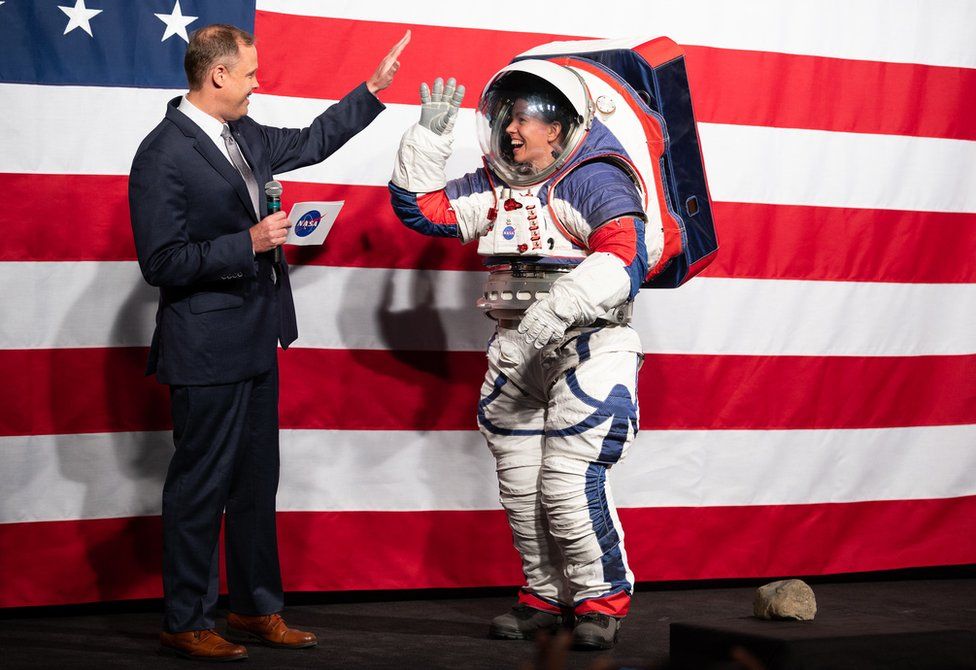
-
 JRCarterParticipantNovember 3, 2019 at 6:51 pm #5049
JRCarterParticipantNovember 3, 2019 at 6:51 pm #5049Breaking Open A Black Hole: The World’s Most Dangerous Experiment
1 user thanked author for this post.
-
 ChristianParticipantNovember 10, 2019 at 9:01 am #5702
ChristianParticipantNovember 10, 2019 at 9:01 am #5702Apparently, the universe isn’t as flat as we thought it was. I mean, did we? Did we think that? Apparently so. Personally, I always thought it was the shape of a ballon or something. But… it’s… well…
The original analysis of the data from the cosmic microwave background (CMB), the so-called echo of the Big Bang, strongly suggested the universe is flat. But models of this flat universe do not perfectly match what we observe. So three researchers performed a new analysis, finding that a closed universe is both consistent with the data and solves other tensions between models and observations. The findings are reported in Nature Astronomy.
Over the last few years, the standard model has been under fire when it comes to the measurement of the expansion rate of the universe. The CMB provides a certain value, while other methods produce a different one. The team believes that their approach actually makes this problem worse. A slightly curved universe would exacerbate the tension. For the team, this is not a defeat but instead a possible suggestion that there’s more out there left to find.
“We may have missed something…i.e. that in reality the Universe is not closed but that there is some unknown mechanism that is mimicking it (and that is also producing the Hubble tension),” Professor Alessandro Melchiorri, from the University of Rome, told IFLScience.
Agh, fuck, I’ll have to find the time to ask my physics colleague about this.
-
Anonymous
InactiveNovember 15, 2019 at 3:09 am #6224This is pretty cool:
Most people look at fish guts and think, “eww.”
Lucy Hughes looked at the bloody waste from a fish processing plant and saw opportunity.
Then a student in product design at the University of Sussex, Hughes was interested in making use of things people normally throw away. So she arranged to visit a fish processing plant near her university, on England’s southern coast.
She came away a bit smelly—“I had to wash even my shoes,” she says—but inspired. After tinkering with various fish parts, she developed a plastic-like material made from scales and skin. Not only is it made from waste, it’s also biodegradable. (…)
The resulting product is strong, flexible and translucent, with a feel similar to plastic sheeting. It biodegrades on its own in four to six weeks, which gives it a major sustainability advantage over traditional bioplastics, most of which require industrial composters to break down. In addition to utilizing materials that would otherwise be thrown away, the production process itself uses little energy, since it doesn’t require hot temperatures. One single Atlantic cod fish produces enough waste for 1,400 MarinaTex bags.
-
 Al-xParticipantNovember 16, 2019 at 7:47 pm #6419
Al-xParticipantNovember 16, 2019 at 7:47 pm #6419Science – the empirical study of observed phenomena
-
Anonymous
InactiveNovember 17, 2019 at 12:40 am #6437I’ve been trying to find an answer to this but haven’t had any luck. When our bodies generate new cells, where do we get the atoms and subatomic particles that make up those cells? I assume from our surrounding environment but how do our bodies absorb these “loose” particles? And how do particles become loose in the first place? Or am I completely wrong and the answer is something else entirely?
Food, I think, mostly. Blood transports the nutrients to wherever it is necessary to build something new. The body is constantly pumping out and converting proteins and fatty acids and other chemical substances.
It’s really complex if you go into the chemistry, I once tried to understand the wiki article on cell division but I just had to give up.
-
Dave
ModeratorNovember 20, 2019 at 3:45 pm #6870This is fascinating.
Humans put into suspended animation for first time
Groundbreaking trial in US rapidly cools trauma victims with catastrophic injury to ‘buy more time’ for surgery
Doctors have put humans into a state of suspended animation for the first time in a groundbreaking trial that aims to buy more time for surgeons to save seriously injured patients.
The process involves rapidly cooling the brain to less than 10C by replacing the patient’s blood with ice cold saline solution. Typically the solution is pumped directly into the aorta, the main artery which carries blood away from the heart to the rest of the body.
…
Though Tisherman’s talk was entitled Suspended Animation, he said he was not exploring ways to preserve astronauts on deep space missions. “I want to make clear that we’re not trying to send people off to Saturn,” he told New Scientist. “We’re trying to buy ourselves more time to save lives.”
1 user thanked author for this post.
-
 JRCarterParticipantNovember 24, 2019 at 6:42 pm #7248
JRCarterParticipantNovember 24, 2019 at 6:42 pm #7248 -
 njerryParticipantNovember 25, 2019 at 1:06 pm #7313
njerryParticipantNovember 25, 2019 at 1:06 pm #7313That’s really sad news.
-
Anonymous
InactiveNovember 25, 2019 at 4:17 pm #735280 % of their habitat destroyed?! What the fuck. Wikipedia doesn’t even list koalas as critically endangered.
-
 SteveUKParticipantDecember 8, 2019 at 7:48 am #8418
SteveUKParticipantDecember 8, 2019 at 7:48 am #8418One of those websites that does a great job of conveying the scale of the natural world;
-
 Sean RobinsonParticipantDecember 28, 2019 at 3:29 am #10324
Sean RobinsonParticipantDecember 28, 2019 at 3:29 am #10324Was going to post this in the Space thread, but figured better here.
.
10 Ways Earth Revealed it’s Weirdness in 2019We live on a strange planet. In a solar system of fiery, poisonous hellscapes, icy slush balls and ballooning orbs of gas, Earth is the only planet teeming with sentient, oxygen-breathing life-forms. It is also the only world in the solar system known to be slowly but steadily turning itself inside out through plate tectonics, as the surface crust of the planet dives deep into the mantle.
But Earth’s strangeness goes way, way deeper than that. From its oddball wobble to its wandering magnetic field, here are 10 ways Earth revealed its weirdness in 2019.
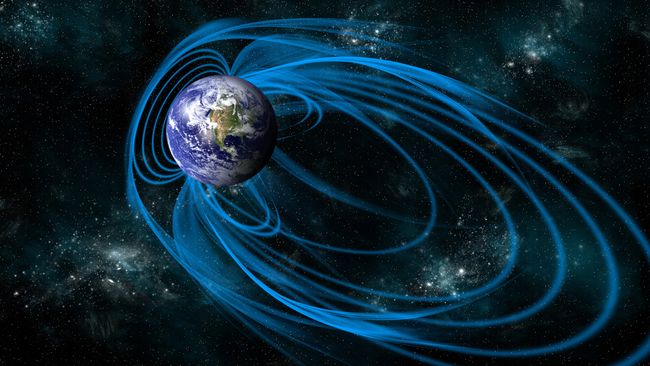
-
 JRCarterParticipantFebruary 16, 2020 at 9:46 pm #14968
JRCarterParticipantFebruary 16, 2020 at 9:46 pm #14968 -
 ToddParticipantFebruary 26, 2020 at 1:30 pm #15882
ToddParticipantFebruary 26, 2020 at 1:30 pm #15882 -
 RocketParticipantFebruary 26, 2020 at 2:59 pm #15894
RocketParticipantFebruary 26, 2020 at 2:59 pm #15894Calling it an animal is a stretch.
They have lost their tissue, their nerve cells, their muscles, everything,” study co-author Dorothée Huchon, an evolutionary biologist at Tel Aviv University in Israel, told Live Science. “And now we find they have lost their ability to breathe.”
It is more like a bacteria or a virus.
H. salminicolalooks like a series of unicellular blobs.
-
 ChristianParticipantMarch 1, 2020 at 8:00 am #16245
ChristianParticipantMarch 1, 2020 at 8:00 am #16245I am not a biologist, but I think there are quite clear criteria of what a virus is and what a bacterium and what an animal. There’s probably good reason if they call it that. And it’s not like they are that unusual in being small animals; they mention the class of animal in the article.
https://en.wikipedia.org/wiki/Myxozoa
-
This reply was modified 5 years, 8 months ago by
 Christian.
Christian.
-
This reply was modified 5 years, 8 months ago by
-
 SteveUKParticipant
SteveUKParticipant -
 JRCarterParticipantApril 6, 2020 at 8:31 pm #21012
JRCarterParticipantApril 6, 2020 at 8:31 pm #21012Evidence of 90-million-year-old rainforest uncovered beneath Antarctic ice
The findings suggest that Earth’s southernmost continent was once home to temperate, swampy rainforests teeming with life.

April 2, 2020, 12:40 PM EDT / Source: Reuters
By ReutersAntarctica is now a harsh land of ice and snow, but has not always been that way.
Earth’s southernmost continent long ago was home to temperate, swampy rainforests teeming with life, scientists said on Wednesday based on pristinely preserved forest soil they retrieved by drilling under the seafloor off Antarctica’s coast.
The sediment core obtained by scientists working aboard the research icebreaker RV Polarstern in the Amundsen Sea near the Pine Island Glacier dated to about 90 million years ago during the Cretaceous Period when dinosaurs were the dominant land animals.
The researchers estimated based on the soil content that this location, 560 miles (900 km) from the South Pole, experienced average annual temperatures of about 53-55 degrees Fahrenheit (12-13 Celsius) and average temperatures during the warmest summer months of about 68-77 Fahrenheit (20-25 Celsius).
That is exceptionally warm for a location near the South Pole, where the average annual temperature now is around minus 40 Fahrenheit (minus 40 Celsius).
A modern temperature analogue may be New York City, according to marine geologist Johann Klages of the Alfred Wegener Institute’s Helmholtz Center for Polar and Marine Research in Germany, lead author of the research published in the journal Nature.
The dark-brownish gray soil was composed of fine-grained silt and clay bearing remains of fossil roots in a dense network, pollen and spores spanning 65 types of plants, with individual cell structures clearly visible.
“If you would go to a forest near you and drill a hole, it would probably look pretty similar,” Klages said.
Klages said the plants included conifers, ferns and flowering plants. While they did not find any animal remains, Klages said there likely were dinosaurs, flying reptiles called pterosaurs and many insects. Dinosaur fossils from Antarctica have been known for years.
The soil came from nearly 90 feet (27 meters) beneath the seafloor under ocean depths of about 3,300 feet (1,000 meters). It was obtained using a seafloor drill rig.
The research underscores the dramatic climate changes Earth has undergone in the past – and is currently undergoing today.
The soil core sample dated from 93-83 million years ago, Klages said. This dates from the planet’s warmest period of the past 140 million years, with sea levels about 560 feet (170 meters) higher than today.
The rainforest environment is all the more remarkable, the researchers said, considering that the region annually experiences a four-month polar night when there is no sunlight to nurture plant life. Klages said no ice sheets were present at the time though seasonal snow fall was likely.
-
 Daniel RParticipantMay 1, 2020 at 1:18 pm #24498
Daniel RParticipantMay 1, 2020 at 1:18 pm #24498I am not a biologist, but I think there are quite clear criteria of what a virus is and what a bacterium and what an animal. There’s probably good reason if they call it that. And it’s not like they are that unusual in being small animals; they mention the class of animal in the article.
https://en.wikipedia.org/wiki/Myxozoa
-
This reply was modified 5 years, 8 months ago by
 Christian.
Christian.
You’d be right.
Bacteria and animals belong to two distinct, quite fundamental categories of living things, specifically prokaryotes and eukaryotes.
Their cellular structures are very, very different, so it makes total sense to talk of something as being a very simple animal as being distinct from a bacterium.
P.S. I’m back.
-
This reply was modified 5 years, 6 months ago by
 Daniel R.
Daniel R.
-
This reply was modified 5 years, 8 months ago by
-
 ChristianParticipantMay 1, 2020 at 6:05 pm #24530
ChristianParticipantMay 1, 2020 at 6:05 pm #24530P.S. I’m back.
Yay!!! Good to see you, Dan!
-
Anonymous
InactiveMay 1, 2020 at 8:32 pm #24534While they did not find any animal remains, Klages said there likely were dinosaurs, flying reptiles called pterosaurs and many insects. Dinosaur fossils from Antarctica have been known for years.
Are there currently no insects on Antarctica? I thought those fuckers could live anywhere. Turns out they’re pussies after all.
-
 ToddParticipantMay 1, 2020 at 11:52 pm #24570
ToddParticipantMay 1, 2020 at 11:52 pm #24570P.S. I’m back.
Great! Did you bring the Protozoa with you? We’re running low.
1 user thanked author for this post.
-
 DavidMParticipantMay 20, 2020 at 10:37 am #26690
DavidMParticipantMay 20, 2020 at 10:37 am #26690The mathematics of how to choose the best cat.
I got as far as “the number of cats you need to look at is 1/e” and my mind was blown.
1 user thanked author for this post.
-
 ToddParticipantJune 18, 2020 at 12:42 pm #29531
ToddParticipantJune 18, 2020 at 12:42 pm #29531 -
 njerryParticipant
njerryParticipant -
Anonymous
InactiveJune 29, 2020 at 11:45 am #30972If you look closely you can see Ozymandius off in the distance.
HE ABANDONED THE SQUID IDEA TO MAKE COVID!
2 users thanked author for this post.
-
Anonymous
Inactive -
Anonymous
InactiveJuly 1, 2020 at 9:12 am #31228Thought this was pretty interesting:
Unfortunately it’s paywalled though, so full article for subscribers only.
I am obviously the third type – the hot sexy type that doesn’t do much leading at all and likes puppies.
-
 ChristianParticipantJuly 1, 2020 at 9:53 am #31233
ChristianParticipantJuly 1, 2020 at 9:53 am #31233Hit the paywall, but at least I saw this headline:
Weird caterpillar uses its old heads to make an elaborate hat
I mean, wouldn’t you have clicked that?

3 users thanked author for this post.
-
Anonymous
Inactive -
Anonymous
InactiveJuly 1, 2020 at 12:49 pm #31252I don’t
1 user thanked author for this post.
-
Anonymous
InactiveJuly 1, 2020 at 12:57 pm #31254Good. For once can we have a post in this forum which isnt about caterpillars and their stupid-ass hats? Please @Christian?
-
Anonymous
Inactive -
 ChristianParticipantJuly 2, 2020 at 5:46 am #31315
ChristianParticipantJuly 2, 2020 at 5:46 am #31315Good. For once can we have a post in this forum which isnt about caterpillars and their stupid-ass hats? Please @christian?
Well, why don’t you make a cool hat out of your old heads and then we’ll talk about you.
-
Anonymous
Inactive -
Anonymous
InactiveJuly 2, 2020 at 6:15 am #31319Why not talk about how I gave you an example of the second type of leader, if leaders were caterpillars that is?
(All that effort…didn’t even notice *grumble grumble* )
It’s a very cool hat you’re wearing, Tim.
-
Anonymous
InactiveJuly 2, 2020 at 6:20 am #31320I dunno, B. That comment seems pretty 1st type-ish…
-
Anonymous
InactiveJuly 2, 2020 at 6:46 am #31329You’re the one who persuaded everyone to read it in the first place. You led me up the garden path with the cuddly pupsys.
-
Anonymous
InactiveJuly 20, 2020 at 1:35 pm #33391Thought this was pretty interesting:
Unfortunately it’s paywalled though, so full article for subscribers only.
I am obviously the third type – the hot sexy type that doesn’t do much leading at all and likes puppies.
My friend would like to know if there are any articles on how to deal with the second type of leader.
1 user thanked author for this post.
-
 JRCarterParticipantSeptember 1, 2020 at 1:02 am #37272
JRCarterParticipantSeptember 1, 2020 at 1:02 am #37272 -
 DavidMParticipant
DavidMParticipant -
 ChristianParticipantOctober 4, 2020 at 7:52 am #39799
ChristianParticipantOctober 4, 2020 at 7:52 am #39799Everything you need to know about how science works, in 10 minutes:
Pft. As if we had ten minutes for that kind of thing when there’s clips of cats and Trump tweets.
-
 ChristianParticipantOctober 4, 2020 at 8:03 am #39802
ChristianParticipantOctober 4, 2020 at 8:03 am #39802Okay, I did find the ten minutes and it was awesome. Feynmann is almost like a standup there, must have been awesome to be in his lectures. Love the bit about proving an impossible. Also, this quote is just the best:
“It doesn’t matter how beautiful your theory is, it doesn’t matter how smart you are. If it doesn’t agree with experiment, it’s wrong.”
Also, “We are never right, we can only be wrong.”
It’s also just interesting that even back then, he was talking about the kind of people who just don’t understand science, don’t want to understand science and thus think it’s easy and anybody can do it by just blurting out what’s on their mind at any given moment, like fucking Trump and his disinfectant comment.
-
Anonymous
InactiveOctober 4, 2020 at 1:56 pm #39823Everything you need to know about how science works, in 10 minutes:
Pft. As if we had ten minutes for that kind of thing when there’s clips of cats and Trump tweets.
1 user thanked author for this post.
-
 Al-xParticipantOctober 7, 2020 at 10:18 pm #40109
Al-xParticipantOctober 7, 2020 at 10:18 pm #40109She blinded me with…
-
 njerryParticipantOctober 8, 2020 at 12:11 pm #40151
njerryParticipantOctober 8, 2020 at 12:11 pm #40151…carbolic acid?
-
 DavidMParticipantOctober 8, 2020 at 2:15 pm #40158
DavidMParticipantOctober 8, 2020 at 2:15 pm #40158Carbolic soap.
-
Anonymous
InactiveOctober 9, 2020 at 1:26 pm #40210 -
 njerryParticipantOctober 9, 2020 at 2:38 pm #40223
njerryParticipantOctober 9, 2020 at 2:38 pm #40223Metabolic bisturbile.
Profligate reprobate.
-
 RocketParticipant
RocketParticipant -
 Sean RobinsonParticipantOctober 24, 2020 at 11:45 pm #41626
Sean RobinsonParticipantOctober 24, 2020 at 11:45 pm #41626Opted for another thread instead of Space. News? Chose Science.
_______________________________________‘Lost’ tectonic plate called Resurrection hidden under the Pacific
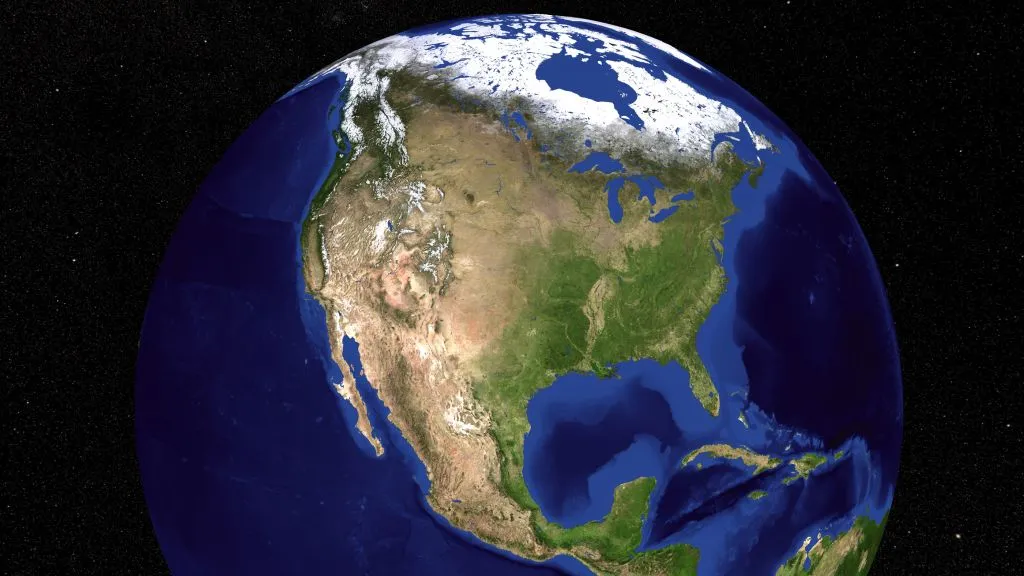
Scientists have reconstructed a long-lost tectonic plate that may have given rise to an arc of volcanoes in the Pacific Ocean 60 million years ago.
The plate, dubbed Resurrection, has long been controversial among geophysicists, as some believe it never existed. But the new reconstruction puts the edge of the rocky plate along a line of known ancient volcanoes, suggesting that it was once part of the crust (Earth’s top layer) in what is today northern Canada.
“Volcanoes form at plate boundaries, and the more plates you have, the more volcanoes you have,” Jonny Wu, a geologist at the University of Houston, said in a statement. “Volcanoes also affect climate change. So, when you are trying to model the Earth and understand how climate has changed … you really want to know how many volcanoes there have been on Earth.”
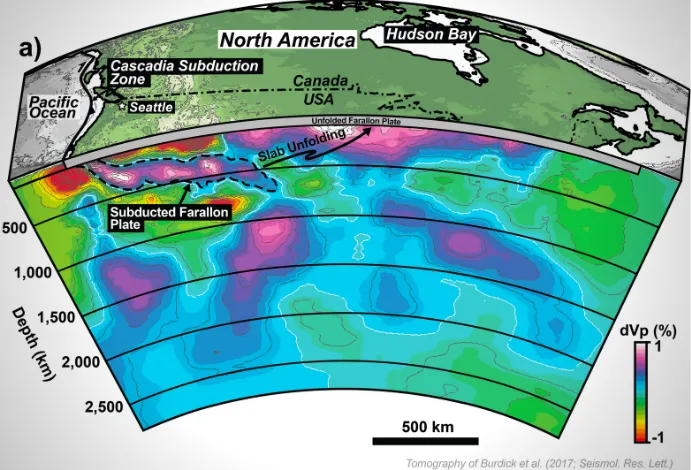

This image shows plate tectonic reconstruction of western North America 60 million years ago showing subduction of three key tectonic plates, Kula, Farallon and Resurrection.Wu and his co-author, University of Houston geology doctoral candidate Spencer Fuston, used a computer model of Earth’s crust to “unfold” the movement of tectonic plates since the early Cenozoic, the geological era that began 66 million years ago. Geophysicists already knew that there were two plates in the Pacific at that time, the Kula plate and the Farallon plate.
Because lots of magma is present east of the former location of these plates in what is today Alaska and Washington, some geophysicists argued there was a missing piece in the puzzle — a theoretical plate they called Resurrection. This magma would have been left behind by volcanic activity at the plate’s edge.
All of these plates have long since dived beneath Earth’s crust in a process called subduction. Wu and Fuston used the computer reconstruction to undo this subduction, virtually raising the plates back to the surface and rewinding their motion. When they did, they found that Resurrection did indeed fit into the picture. They reported their findings Oct. 19 in the journal GSA Bulletin.
“When ‘raised’ back to the Earth’s surface and reconstructed, the boundaries of this ancient Resurrection tectonic plate match well with the ancient volcanic belts in Washington State and Alaska, providing a much sought-after link between the ancient Pacific Ocean and the North American geologic record,” Wu said.
-
 ToddParticipantNovember 17, 2020 at 1:54 pm #43487
ToddParticipantNovember 17, 2020 at 1:54 pm #43487Triassic period ended with ‘lost’ mass extinction and a million-year rain storm, study claims
Long ago, before the dawn of the age of dinosaurs, a heavy rain descended upon the supercontinent of Pangaea — and it kept raining for more than 1 million years.
This epic rainy spell — known now as the Carnian Pluvial Episode (CPE) — occurred roughly 233 million years ago and was a stark shift from the typically arid conditions of the late Triassic period. But stormy skies weren’t the only change Earth was facing. According to a study published Sept. 16 in the journal Science Advances, new fossil evidence suggests that the CPE was in fact a major extinction event — driven by volcanic eruptions and climate change — that resulted in the deaths of one-third of all marine species, plus a significant number of terrestrial plants and animals.
This “lost” extinction event doesn’t quite reach the death toll of the five major mass extinctions typically discussed by the scientific community (the Permian-Triassic extinction, which occurred just 20 million years earlier, may have wiped out 90% of living species, for example). However, the study authors argue, the CPE isn’t just important for what was lost — but also for what was gained. Far from just a period of death, the CPE was a period of “turnover,” the researchers wrote, effectively paving the way for the dominion of the dinosaurs and the evolution of many terrestrial animal groups that still roam the Earth today.
“A key feature of the CPE is that extinction was very rapidly followed by a big radiation [of new species],” lead study author Jacopo Dal Corso, a geology professor at the China University of Geosciences in Wuhan, told reporter Scott Norris of Eos.org. “A number of groups that have a central role in today’s ecosystems appeared or diversified for the first time in the Carnian [an age within the Triassic that lasted from 237 to 227 million years ago].”
Those groups include modern coral reefs and plankton in the oceans, Dal Corso told Eos, as well as the appearance of land-based fauna such as frogs, lizards, crocodilians, turtles and a diverse new swath of dinosaurs (who would thrive on Earth for the next 150 million years). Conifer trees also made their first appearance during the Carnian, further planting the roots of many modern ecosystems and inviting the “dawn of the modern world,” the authors wrote in their new paper.
So, what brought on the world-changing rain in the first place? It’s hard to say for certain, but the study authors believe the answers may lie in a continent-spanning lava field known as the Wrangellia Province, which runs for thousands of miles across the western coast of modern-day Canada. This massive igneous province was laid down by violent volcanism during the Carnian, and overlaps (at least partially) with the CPE.
Prior studies estimate that those mighty eruptions released at least 5,000 gigatons of carbon into the atmosphere (that’s hundreds of times more than annual global emissions today), likely kicking off the extreme climate change that followed. The world became significantly more humid, heavy rains became the norm, the oceans acidified and entire species died in droves, paving the way for strange new plants and animals to slowly take over.
That’s the story that the researchers envision in their new study, anyway. However, they acknowledge, much more work is needed to understand the full scope of the CPE and its possible triggers. There may have been other volcanic events at play beyond Wrangellia, the team wrote, but pinpointing them will be a challenge, as vast amounts of volcanic basalts from the Triassic period have already subducted into the Earth. Our ever-changing planet is eating its own history, leaving stones and bones as the only clues.
You can read more about the CPE and its impacts at Eos.org.
3 users thanked author for this post.
-
 ToddParticipantJanuary 13, 2021 at 2:06 pm #50230
ToddParticipantJanuary 13, 2021 at 2:06 pm #502304-stranded DNA’s activity in living cells unraveled for 1st time
Two thin strands wound together in a spiraling helix: This is the iconic shape of a DNA molecule. But sometimes, DNA can form a rare quadruple-helix, and this odd structure may play a role in diseases like cancer.
Not much is known about these four-stranded DNA, known as G-quadruplexes — but now, scientists have developed a new way to detect these odd molecules and observe how they behave in living cells. In a new study, published Jan. 8 in the journal Nature Communications, the team described how certain proteins cause the G-quadruplex to unravel; in the future, their work could lead to new drugs that grab hold of quadruple-helix DNA and disrupt its activity. Drugs could intervene, for instance, when the odd DNA contributes to cancerous tumor growth.
“Evidence has been mounting that G-quadruplexes play an important role in a wide variety of processes vital for life, and in a range of diseases,” study author Ben Lewis, from the Department of Chemistry at Imperial College London, said in a statement.
In general, G-quadruplexes crop up in cancer cells at much higher rates than healthy cells, according to the statement. Various studies have linked the presence of four-stranded DNA to the rapid division of cancer cells, a process that leads to tumor growth; so scientists hypothesized that targeting the weird DNA with drugs could slow or stop this unbridled cell division. Some studies already support this idea.
“But the missing link has been imaging this structure directly in living cells,” Lewis said. In other words, scientists needed a better way to watch these DNA molecules in action. The new study begins to fill in that missing knowledge.
G-quadruplexes can form either when one double-stranded DNA molecule folds over on itself or when multiple DNA strands link up at a single nucleic acid, known as guanine — one of the building blocks of DNA, according to Discover Magazine. To spot this funky DNA in cells, the team used a chemical called DAOTA-M2, which emits a fluorescent light when it binds to G-quadruplexes. Rather than only measuring the brightness of the light, which varies depending on the concentration of DNA molecules, the team also tracked how long the light shone.
Tracking how long the light lingered helped the team see how different molecules interacted with the four-stranded DNA in living cells. When a molecule latched onto the DNA strand, it would displace the glowing DAOTA-M2, causing the light to go out faster than if the chemical had remained in place. Using these methods, the team identified two proteins, called helicases, that unwind the strands of four-stranded DNA and jumpstart the process of breaking them down.
They also identified other molecules that bind to the DNA; future studies on these molecular interactions could help scientists design drugs that bind to the DNA.
“Many researchers have been interested in the potential of G-quadruplex-binding molecules as potential drugs for diseases such as cancers,” Ramon Vilar, a professor of medicinal inorganic chemistry at Imperial, said in the statement. “Our method will help to progress our understanding of these potential new drugs.”
1 user thanked author for this post.
-
 ChristianParticipantJanuary 15, 2021 at 5:58 am #50481
ChristianParticipantJanuary 15, 2021 at 5:58 am #50481In a case of Study Finds What Everybody Knows…
Study Finds That When Cannabis Is Legalized, Ice Cream And Cookie Sales Go Up
A team from Georgia State University decided to look at the effect of legalization on junk food consumption, publishing their findings in Economics & Human Biology. It may sound a little frivolous, until you consider that some 42 percent of the US population are considered obese, according to the Centers for Disease Control and Prevention.
The researchers took retail scanner data on purchases of high-calorie food, using differences in timing of the introduction of recreational cannabis use laws across different states in order to measure the effects of legalization on sales. You will likely not be shocked to find that legalization of cannabis was linked to an increase in sales of junk food.
“In [Recreational Marijuana Legalization] RML states monthly sales of junk food increased by 3.2 percent and 4.5 percent when measured by volume,” the team wrote in their study. “Specifically, in counties located in RML states, monthly sales of high-calorie food increased by 3.1 percent for ice cream, 4.1 for cookies, and 5.3 percent for chips.”
Despite stoner stereotypes, the team notes that there is actually very little formal causal evidence to support the link between cannabis and food consumption, though pretty much every weed user will likely anecdotally confirm they have at some point gotten the “munchies”.
“Our research appears to be the first that causally links cannabis consumption to junk food consumption,” the team wrote. “Our findings may be particularly relevant from a policymaking perspective, at a time when more states are considering legalizing marijuana consumption while battling an obesity epidemic and when different countries have already fully legalized or are considering legalizing consumption.”
Though increased junk food consumption is by no means a good thing for health, there are other factors to be weighed up by policymakers, such as the finding by the same authors that legalization of cannabis was associated with a 12.4 percent drop in alcohol sales. Nevertheless, the research highlights that there may be unpredictable consequences for legalization.
“You think marijuana does no harm — that’s pretty much the consensus today,” co-author Alberto Chong told The Academic Times. “But there are unintended consequences, and one of them is the fact that you really get very hungry and you start eating crap.”
The 12.4 percent drop in alcohol sales is interesting, too.
-
 ToddParticipantMarch 16, 2021 at 1:07 am #58148
ToddParticipantMarch 16, 2021 at 1:07 am #58148The Morphogenic Field is Real and These Scientists Show How to Use It to Understand Nature
In a new study, Chris Jeynes and Michael Parker pose the question: How does nature produce such stunning symmetry and order in many systems observed across enormous scales? Under the microscope, a snowflake shows intricate patterning and remarkable symmetry, and in a telescope the same is observed for spiral galaxies up to half a million light years across.
Both of these systems are made of innumerable subunits (be they water molecules or stars and planets) which should behave completely oblivious to the overall configuration of the conglomerate. That is to say, the behavior of these systems at the scales that matter—the fundamental units of which they are composed— should be completely random aside from some formative causation arising from intermolecular or inter-gravitational interactions, which are not long-range.
The question then becomes what is the causative ordering parameters that results in chaotically interacting many-body systems coming together in spectacular symmetry and ordered geometrical configurations? The physics that describes the micro-scale ordering of a system is known as entropy, so obviously this is where we must turn.
When we talk about entropy, we have to remember that the idea of entropy was derived assuming an isolated or closed system where an increase of entropy is essentially an increase in the amount of “lost” energy. Thermodynamically speaking, the system will be tending towards a state of thermal equilibrium – a state where no more work can be done on the system, unless from external sources – this is the state of maximal entropy.
Historically, and even in some modern-day compelling theories, the causative ordering force was postulated to be a morphogenic field—a field that shaped the morphogenesis of objects much like a magnetic field would do to iron filings. Such a notion was swiftly dismissed by scientists as it was presumed to require some kind of magical force to exert the ordering influence, a force not known to physics.
Holomorphic Info-Entropy
Now, however, researchers Jeynes and Parker have mathematically described the morphogenic field and identified the force carrier—an entropic force. The researchers describe a new concept linking information and entropy together, through the system’s elemental parts, in what they term holomorphic info-entropy—much like the linking of space and time into the unitary manifold of spacetime or electricity and magnetism into electromagnetism. And just like in the latter terms, where the change in state of one results in a change in state of the other—like coupled oscillating electric and magnetic fields—a change in information or entropy results in the same reciprocal influence.We showed that entropy and information can be treated as a field and that they are related to geometry. Think of the two strands of the DNA double helix winding around each other. Light waves have the same structure, where the two strands are the electric and magnetic fields. We showed mathematically that the relationship between information and entropy can be visualised using just the same geometry.
–Chris Jeynes and Michael Parker
Using the info-entropy theoretic, the researchers studied one particularly prevalent geometric configuration, the double helix and double logarithmic spiral.
Their analysis shows that double helical and double logarithmic spiral trajectories in space-time are maximum entropy states. That is to say that among all possible ways the system can be configured, the spiral and double helix maximize entropy, and a system will always go to the state that maximizes entropy, making this configuration the most stable or equilibrium condition available to the system, and hence the ubiquity of these structures in nature.
Spirals Everywhere
The double helix is well known from the geometrical configuration of polymerized nucleic acids: the iconic DNA double helix spiral. Since the researchers had now devised a means to calculate the info-entropy of such a configuration, they used their method to calculate the exact energy difference between two configurations of DNA, the canonical B-form, and a less well-known yet still physiologically salient structure the P-form DNA. The P-DNA form is interesting in that each helical turn occurs each 2.62 bases, while in B-form each turn occurs every 10.4 turns. So, there is a lot of potential energy (info-entropy) stored in the P-form, and Jeynes and Parker were able to exactly calculate this energy difference, agreeing with the precise measurements of Bryant et al. (2003).Holographic Temperature and Superfluous Dark Matter
Extending this analysis to an astronomically larger scale, the researchers then looked at spiral galaxies—noting that spiral galaxies are double spirals just as DNA is a double helix – mathematically speaking they have similar geometries.“It is not surprising that the same entropic treatment applies from the nano-scale to the cosmic, since entropy is intrinsically scaleless.”
To test their theory, they started with our very own galaxy – the Milky Way – and set about calculating its mass.
Roger Penrose was able to show that the entropy of a galaxy is dominated by its central super-massive black hole. So, utilizing the famous Hawking and Bekenstein entropy equation, the entropy was calculated for the 4.3 million solar mass super-massive black hole. As discovered by Hawking, a temperature for the black hole event horizon was also calculated. The product of this temperature and the entropy can then be calculated as an energy, from which a mass can be determined using Einstein’s famous equation.
According to Jeynes and Parker, if you can assign a temperature to the black hole event horizon, then it follows that you can assign a temperature to a galaxy surface horizon. Utilizing their holomorphic info-entropy equations, they calculated the galactic radius and what they term the holographic temperature. Now, with the holographic temperature and the entropy of the Milky Way, they were able to calculate its mass, which came out to approximately 0.94 trillion solar masses—remarkably close to the virial mass of the galaxy (about 1.3 trillion solar masses). Note that the observable mass of the Milky Way is only around 250 billion solar masses (give or take a 100 billion); however, the virial mass is the mass determined from the observed asymptotic velocity curve, which cannot be accounted for by the visible mass of the galaxy, hence the postulation of dark matter.
What their calculations show is that the postulation of dark matter (which has failed every attempt of detection) is superfluous. The entropic force that pushes the galaxy into a double logarithmic geometry is accounting for the additional energy causing the anomalous velocity profiles of galaxies. There is therefore a veritable morphogenic field that is the source of causative formation via an emergent entropic force.
“The stars in the galaxy are simply choreographed by an entropic force to line up into a pair of such spirals to maximise entropy.”
1 user thanked author for this post.
-
Anonymous
InactiveMarch 21, 2021 at 5:59 pm #58876Reproductive Problems in Both Men and Women Are Rising at an Alarming Rate – Scientific American
What we think of is the fact that the whole spectrum of reproductive problems in males are increasing by about 1 percent per year in Western countries. This “1 percent effect” includes the rates of declining sperm counts, decreasing testosterone levels and increasing rates of testicular cancer, as well as a rise in the prevalence of erectile dysfunction. On the female side of the equation, miscarriage rates are also increasing by about 1 percent per year in the U.S., and so is the rate of gestational surrogacy. Meanwhile, the total fertility rate worldwide has dropped by nearly 1 percent per year from 1960 to 2018.
-
Anonymous
Inactive -
Anonymous
InactiveMarch 26, 2021 at 3:05 pm #59412The other issue might be a power source for such a drive. Using nuclear power, we can only go through space at 4.5% light speed.
The headache is the light speed limit – a.k.a. C.
The way I understand it – very generally – is that when we are motionless in space, we are always moving at the speed of light – C – through the dimensional line of “time” in spacetime. If you made a graph of spacetime with space represented by the Y axis and time by the X axis, then when you’re standing still in any frame of reference, you’re actually moving through time at the speed of light. So if you are moving at any speed through space, your progress in time slows down relative to every stationary object in your frame of reference. The arc between the X & Y axis is always going to be the same length and that what C represents on that chart. So if you were moving at the speed of light, time would essentially stop. If you tried to exceed the speed of light, then actually you’d be moving backwards or into negative time but at a speed less than C in space.
So, a metaphorical extrapolation of this could be similar to descending through a liquid like water. The water surrounding you represents spacetime, and as you and other people or objects descend you cannot see it. But if something moves in the liquid, it creates ripples and those are visible. The ripples would be the light we see. However, they are part of a stationary ubiquitous substance and the ripples aren’t moving actually. Instead, we – and the other objects – are in motion and it only appears to us that the light is what is actually moving.
1 user thanked author for this post.
-
Anonymous
InactiveMarch 28, 2021 at 2:22 pm #59554The funniest part of this weird science story is that two people got kicked out of Princeton for “seditious nonsense.”
Why Did This Entire Village of Scientists Disappear One Day? – YouTube
-
Anonymous
InactiveApril 2, 2021 at 1:21 pm #59945Posting this because Godzilla vs Kong completely unnecessarily reintroduced the stupid “fluoride in the water” conspiracy.
I’m half convinced that “Big Soda Pop” and bottled water marketers are behind all this “tap water is bad for you” bull crap.
I mean, does it seem intelligent that a person buys and drinks bottled water when it’s available right there in the faucet in your kitchen sink? Or pays extra for a filter on the tap that doesn’t do anything because the water is already clean.
1 user thanked author for this post.
-
 ToddParticipantApril 2, 2021 at 6:21 pm #59974
ToddParticipantApril 2, 2021 at 6:21 pm #59974Posting this because Godzilla vs Kong completely unnecessarily reintroduced the stupid “fluoride in the water” conspiracy.
I’m half convinced that “Big Soda Pop” and bottled water marketers are behind all this “tap water is bad for you” bull crap.
I mean, does it seem intelligent that a person buys and drinks bottled water when it’s available right there in the faucet in your kitchen sink? Or pays extra for a filter on the tap that doesn’t do anything because the water is already clean.
The best water always came out of a garden hose on a hot summer day. It always tasted better.
1 user thanked author for this post.
-
 RocketParticipantApril 5, 2021 at 5:03 pm #60151
RocketParticipantApril 5, 2021 at 5:03 pm #60151does it seem intelligent that a person buys and drinks bottled water when it’s available right there in the faucet in your kitchen sink?
Why don’t you ask the people of Flint, Michigan that question?
-
 JRCarterParticipantApril 16, 2021 at 6:59 pm #61102
JRCarterParticipantApril 16, 2021 at 6:59 pm #611022 users thanked author for this post.
-
 JRCarterParticipantApril 21, 2021 at 1:19 pm #61430
JRCarterParticipantApril 21, 2021 at 1:19 pm #61430And another article on the T-Rex:
https://www.livescience.com/amp/t-rex-slow-walker-tail.html
2 users thanked author for this post.
-
Anonymous
InactiveApril 21, 2021 at 1:30 pm #61435I imagine if any alien travel writers had visited Earth back then, this place would be described as “a hellishly beautiful planet with massive monsters covering every square meter. Do not land!”
Imagine if extraterrestrials landed today. First question would be “where did all the giant monsters go?”
All we could do is show them a chicken and say, “they all turned into these.”
-
 Al-xParticipant
Al-xParticipant -
 JRCarterParticipantMay 11, 2021 at 1:31 am #63060
JRCarterParticipantMay 11, 2021 at 1:31 am #63060Aw, crap:
-
 Al-xParticipant
Al-xParticipant -
 JRCarterParticipantMay 21, 2021 at 4:16 am #63796
JRCarterParticipantMay 21, 2021 at 4:16 am #63796 -
Anonymous
Inactive -
 JRCarterParticipantMay 27, 2021 at 6:29 pm #64877
JRCarterParticipantMay 27, 2021 at 6:29 pm #64877Tasmanian devils born in the wild on Australian mainland for the first time in 3,000 years
2 users thanked author for this post.
-
 Al-xParticipant
Al-xParticipant -
 JRCarterParticipantJuly 12, 2021 at 5:51 pm #69328
JRCarterParticipantJuly 12, 2021 at 5:51 pm #693281 user thanked author for this post.
-
 JRCarterParticipantJuly 23, 2021 at 11:46 pm #70267
JRCarterParticipantJuly 23, 2021 at 11:46 pm #70267 -
 JRCarterParticipantAugust 29, 2021 at 12:42 pm #73357
JRCarterParticipantAugust 29, 2021 at 12:42 pm #73357Scientists Discover Fossil Of A 4-Legged Whale With A Raptor-Like Eating Style
https://www.npr.org/2021/08/27/1031659020/four-legged-whale-legs-discovered-43-million-years
1 user thanked author for this post.
-
 RocketParticipantAugust 30, 2021 at 2:58 pm #73414
RocketParticipantAugust 30, 2021 at 2:58 pm #73414how bout a name that doesnt exist
Hmmm… the page you’re looking for isn’t here. Try searching above.
-
 JRCarterParticipantSeptember 26, 2021 at 3:18 pm #75360
JRCarterParticipantSeptember 26, 2021 at 3:18 pm #753602 users thanked author for this post.
-
 ToddParticipantOctober 25, 2021 at 2:14 pm #77262
ToddParticipantOctober 25, 2021 at 2:14 pm #77262New Physics Experiment Indicates There’s No Objective Reality
Someone once said: “The world is all that is the case.”
But, is it?
Researchers performing a long-awaited experiment created different realities that are irreconcilable, proving that objective facts can be made to exhibit properties that cannot cohere, according to a recent study shared on a preprint server.
It turns out, reality is at odds with itself.
Two facts, no ultimate reality
Nobel Prize-winner Eugene Wigner described a thought experiment in 1961 that highlighted an uncommon paradox of quantum mechanics. Specifically, it reveals the strangeness of the universe when two observers, like Wigner and his friend, observe two distinct realities. Since the thought experiment, physicists have used it to explore the very nature of measurement, in addition to the bizarre idea of whether objective facts actually exist or not. This is a pretty crucial feature of science, since empirical enquiry works to establish objective facts. But if there aren’t any facts, how can science presume to describe a real world in the first place?
For decades (and philosophically, much longer), this has served as a great bit for entertaining dinner guests, but Wigner’s thought experiment hasn’t become more than that. Until now. In 2020, physicists realized that recent quantum technology advances had made it possible to create Wigner’s Friend test in a real-world experiment. In essence, we can create different realities, and compare them in a lab to see if they can be reconciled, or cohere, in one system. And researcher Massimiliano Proietti of Heriot-Watt University, Edinburgh, along with a handful of researchers, said they performed this long-awaited experiment for the first time: Creating distinct realities, compare-and-contrasting them, and discovering that they are, in fact, irreconcilable.
Quantum entangled photons reproduced Wigner’s thought experiment
Wigner’s initial thought experiment was simplistic in principle, starting with a single polarized photon that can have either vertical or horizontal polarization, upon measuring. The laws of quantum mechanics hold that a photon exists in both states of polarization simultaneously, in what’s called superposition. In his thought experiment, Wigner imagined a friend measuring the state of a photon in a different lab, and recording the result while Wigner watched from afar. He has no clue what his friend’s measurement is, and is thus forced to assume that the photon and its measurement are in a state of superposition of every possible outcome for the experiment.
Wigner can say, however, that the “fact” of the superposition’s existence is real. And, strangely, this state of affairs suggests that the measurement can’t have taken place. Obviously, this stands in direct contradiction to Wigner’s friend’s point-of-view, who just measured and recorded the photon’s polarization. He can even call Wigner and tell him the measurement was taken, without revealing the results. This means there are two realities at odds with one another, and “calls into question the objective status of the facts established by the two observers,” explained Proietti and colleagues, in an MIT Technology Review report. And the new research reproduced Wigner’s thought experiment by using entanglement techniques for many particles at the same time.
This is a breakthrough experiment from Prioretti and his colleagues. “In a state-of-the-art 6-photon experiment, we realize this extended Wigner’s friend scenario,” they added in the report. And it raised some baffling questions that have forced physicists to confront the nature of reality. There might be a loophole to some assumptions that made this unknowable reality conclusion necessary, but if everything holds up to future scrutiny, it turns out reality does not exist. So the next time your friends think something is or isn’t the case, consider interjecting with an argument from quantum physics: they’re both wrong, and so are you, because even the simple fact of the disagreement itself is just another illusion.
-
Anonymous
InactiveDecember 30, 2021 at 1:17 am #81859wrong thread
-
 ChristianParticipantJanuary 15, 2022 at 10:19 am #82955
ChristianParticipantJanuary 15, 2022 at 10:19 am #82955Someone once said: “The world is all that is the case.”
What the fuck? I won’t read past the first sentence if the first sentence quotes Wittgenstein’s Tractatus Logico-Philosophicus and doesn’t fucking bother to give Wittgenstein’s name. “Someone” my ass.
3 users thanked author for this post.
-
Anonymous
InactiveJanuary 15, 2022 at 2:38 pm #82970What the fuck? I won’t read past the first sentence if the first sentence quotes Wittgenstein’s Tractatus Logico-Philosophicus and doesn’t fucking bother to give Wittgenstein’s name. “Someone” my ass.
Still, it is an interesting read – it reminds me a bit of the premise of Cixin Liu’s THREE BODY PROBLEM novel. It does feel like something is missing, but at the same time, the “human factor” in quantum observations is also an interesting “problem” as the limitations of human perception and cognition when interpreting results are equally difficult to mathematically quantify. Physicist and computer pioneer Emerson Pugh once said that if the human mind were so simple we could understand it, then we would be too simple to understand it. The same naturally holds true of the nature of reality as well. It has to be beyond comprehension for us to be able to comprehend anything. Any simpler and we simply would not exist.
At the same time, Hindu and Buddhist sages have been saying this for a few thousand years, and they didn’t have to do a single experiment.
1 user thanked author for this post.
-
 RocketParticipantJanuary 19, 2022 at 6:14 pm #83367
RocketParticipantJanuary 19, 2022 at 6:14 pm #83367New Physics Experiment Indicates There’s No Objective Reality
These scientists are almost at the same level of the astronomers from the Space thread.
-
 JRCarterParticipantJanuary 22, 2022 at 8:11 pm #83690
JRCarterParticipantJanuary 22, 2022 at 8:11 pm #83690 -
 njerryParticipant
njerryParticipant -
 JRCarterParticipantFebruary 17, 2022 at 9:38 pm #85856
JRCarterParticipantFebruary 17, 2022 at 9:38 pm #85856Ancient Spinosaurus Fossil Sheds Light on the Huge Semi-aquatic Dinosaurs
1 user thanked author for this post.
-
 JRCarterParticipantMarch 11, 2022 at 7:08 pm #87400
JRCarterParticipantMarch 11, 2022 at 7:08 pm #874002 billion genetically modified mosquitos are about to be released in the US
https://bgr.com/science/2-billion-genetically-modified-mosquitos-are-about-to-be-released-in-the-us/
-
 ToddParticipantMarch 12, 2022 at 4:00 am #87463
ToddParticipantMarch 12, 2022 at 4:00 am #874632 billion genetically modified mosquitos are about to be released in the US
https://bgr.com/science/2-billion-genetically-modified-mosquitos-are-about-to-be-released-in-the-us/
I cannot see how this could possibly go wrong.
-
Anonymous
Inactive -
 Tom CatParticipant
Tom CatParticipant -
Anonymous
Inactive -
 ToddParticipantMay 2, 2022 at 12:02 am #90881
ToddParticipantMay 2, 2022 at 12:02 am #90881 -
 JRCarterParticipantAugust 4, 2022 at 10:59 pm #97199
JRCarterParticipantAugust 4, 2022 at 10:59 pm #97199The Earth Is Spinning so Fast, We Might Have to Turn Back the Clock
https://futurism.com/earth-spinning-fast-turn-back-clock
1 user thanked author for this post.
- You must be logged in to reply to this topic.









